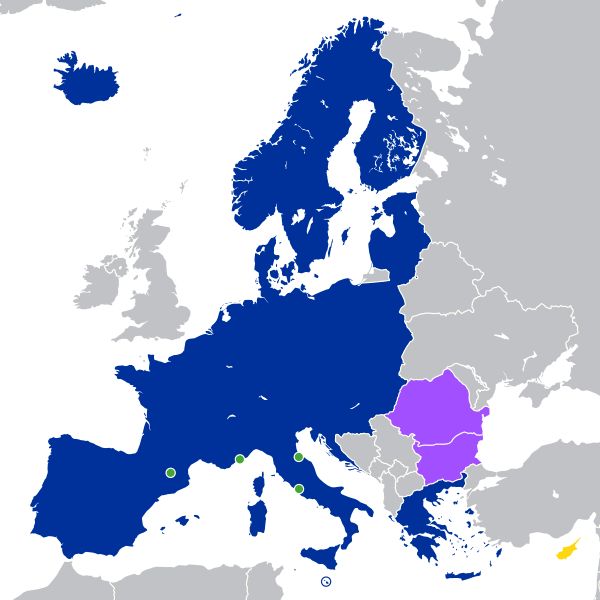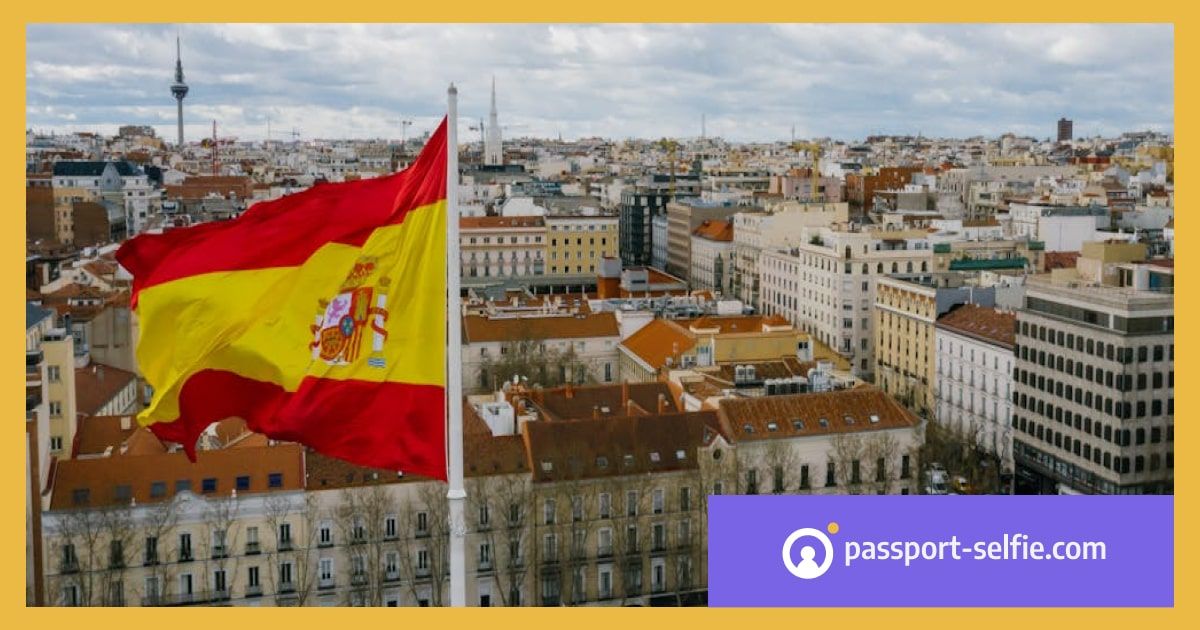Summary
Don't have time to read through this article? We've summarized all the important points for you:
- To visit Spain for up to 90 days, you need a Schengen visa, covering all Schengen countries.
- Apply at the Spanish consulate or an authorized visa center, with all required documents.
- For stays longer than 90 days, explore visas like the Digital Nomad, Student, Work, or Residence visas.
- Your Spanish Schengen visa also lets you visit some non-Schengen countries and microstates, but be sure to verify entry requirements for each.
Planning a trip to Spain or other European countries? The Schengen Area opens doors to some of Europe's top destinations. Not sure if you need a Schengen visa or what’s required? No worries, we’ve got all the details you need to make your travel plans smooth and stress-free.
About the Schengen Visa

With a Schengen visa, you can explore 29 European nations without restriction, Spain included. This visa is your gateway to a worry-free European trip. The first step is to check if you need this visa, and then make sure your application is accurate.
Who Needs a Schengen Visa?
If you’re from a non-EU nation and planning a visit to the Schengen Area (up to 90 days within a 180-day period), you must apply for a Schengen Visa. This is necessary for tourism, business, or visiting family. However, some countries have special agreements allowing their citizens to bypass the visa for short stays.
In this EU list you will find the nationalities that require a visa for entry into the Schengen area. There are exceptions for certain travelers, including diplomats, military personnel, refugees, and students on school trips.
Only visiting one Schengen country? Apply for your visa at the consulate of the country you're heading to.
Planning to visit several Schengen countries? Apply for your visa at the consulate of the country where you'll spend the most nights.
Traveling around Schengen without a principal spot? If you're staying equal nights in different countries, apply at the consulate of the country you'll enter first.
What if there’s no embassy or consulate for my Schengen destination where I live? You will likely need to apply in the embassy or consulate of another Schengen country in your area - or a Visa Application Center (VAC), although additional fees may apply for this last option.
Can I cancel my bookings after getting a Schengen visa? Yes, you can cancel your bookings after receiving a Schengen visa, but make sure that your new travel plans still comply with the conditions of your visa. If your main destination changes, inform the consulate that issued your visa since big changes might need a new application.
Our Tip: With this short-stay visa calculator you can easily track how many days you have left in your Schengen stay. This useful tool will help you ensure you stay within your allowed 90-day limit, to avoid overstaying.
General Requirements for Schengen Visas
When applying for a Schengen Visa, you'll need to compile various important documents. Here’s a general checklist:
- Visa Application Form: It must be a fully completed and signed Schengen Visa Application Form.
- Passport: Must be valid for at least three months beyond your planned departure from the Schengen area and issued within the last 10 years.
- Biometric Photos: Two recent passport photos taken within the last three months that meet specific standards. You can easily get a Schengen visa-compliant photo online using our online passport photo maker tool.
- Travel Insurance: Coverage of at least €30,000 for medical emergencies, valid throughout the Schengen area.
- Proof of Accommodation: Hotel bookings, rental agreements, or an invitation letter from a host.
- Proof of Financial Means: Bank statements, sponsorship letters, or a combination of both, showing you can support yourself during your stay..
- Round Trip Reservation: Flight itinerary with entry and exit dates.
- Visa Fee: €90 for adults and €45 for children aged 6-12. For applicants from Armenia, Azerbaijan, and Belarus, the fee is €35, and for applicants from Cabo Verde, it is €67.50 (as of August 2024).
Make sure to look up the specific requirements for the country you are applying to, as there could be extra documents required.
Schengen Visa for Spain
To boost your chances of getting your Schengen visa for Spain approved, here are the specific requirements you'll need to provide, in addition to the standard Schengen visa documents:
- You’ll need to show you have enough money to stay in Spain and to get back home or head to another country (they might shorten your stay if your funds are tight, and they’ll note this in your passport).
- Make sure you’ve got a good reason for your trip (especially if you’re from a third country).
- If needed, have your health certificates ready to go.
- You can’t have an entry ban.
- You shouldn’t be a threat to public health, order, national security, or Spain’s international relations.
- If you have an invitation letter, it should only prove you’ve got a place to stay. It won’t replace the need to meet other entry requirements, but it should mention if your stay covers all or part of your expenses.
Application Process for a Spanish Tourist or Visitor Visa
- Determine if You Need a Visa: Check if your nationality requires a Schengen Visa.
- Complete the Visa Application Form
- Schedule an Appointment: Book an appointment at the respective Spanish Embassy or Consulate.
- Prepare the Required Documents: Gather all necessary documents.
- Attend the Visa Interview: Bring your documents and attend the interview at the scheduled time.
- Pay the Visa Fee
- Wait for Processing: The processing time can vary, so apply well in advance of your planned travel dates.
Be sure to check the official website of the Spanish Embassy or Consulate in your country for more details. Also, see if there are any authorized visa application centers nearby.
Our Tip: Don’t wait until the last minute! Submit your application at least 15 days before your trip, but you can apply as early as six months ahead.
Extending Your Visitor Visa in Spain
Applying for a visitor visa (Schengen Visa) extension in Spain is possible, but it is generally only granted under exceptional circumstances:
- Late Entry: If you arrived in Spain later than your visa's start date.
- Humanitarian Reasons: For urgent, unforeseen situations like medical emergencies or major family events.
- Force Majeure: Unpredictable events beyond your control, such as natural disasters or political unrest.
- Personal Reasons: Professional obligations or other important personal matters.
- First, it is important that you gather required documents:
- Passport: Valid for at least three months beyond the intended departure date.
- Application Form
- Travel Health Insurance
- Proof of Reason for Extension: Medical certificates, proof of family events, or documentation of force majeure
- Submit Your Application
- Where to Apply: Contact the Spanish National Police or a local police station (Extranjería)12.
- Apply before your current visa expires and ensure you have not exceeded the 90 days within a 180-day period.
- Attend an Interview: You may be required to attend an interview to explain your reasons for the extension.
- Wait for Decision: The authorities will review your application and inform you of their decision.
Our Tip: Consider seeking legal advice or assistance from immigration experts to strengthen your application.
Long-Term Stay Alternatives
Planning to hang out in Spain for more than 90 days for other reasons? A Schengen visa won’t cut it for long-term stays. Here’s are the most popular visa options for an extended stay in Spain:
- Digital Nomad Visa: This visa is for anyone who wants to live in Spain while working remotely for a company or employer based outside of Spain, or if you're self-employed. You'll need to show proof of remote work and enough income. Check out Spain’s official website for all the details.
- Student Visa: Want to study in Spain? You’ll need a student visa, which requires an acceptance letter from a Spanish school, proof of financial means, and health insurance.
- Work Visa: Planning to work in Spain? You’ll need a work visa, which means you must have a job offer from a Spanish company and get approval from Spanish labor authorities.
- Residence Visa: If you're moving to Spain for reasons other than work or study, you can apply for a residence visa. This typically requires proof of financial stability and health insurance. Check out the Spanish Ministry of the Interior’s website for more info.
Our Tip: You’ll likely need biometric photos for your Spanish visa or residence application. Use our Passport Photo App to snap them easily yourself, saving both time and money.
Using Your Spanish Schengen Visa for Other Countries
A Spanish Schengen Visa allows you to travel not only to Spain but also to other countries within the Schengen Area, where you can stay for up to 90 days within a 180-day period. This rule applies collectively to all Schengen countries, not only Spain.
Just remember:
- While you don’t have to enter the Schengen Area through Spain, it’s generally recommended that Spain be your primary destination if you obtained your visa from the Spanish consulate.
- With a Spanish Schengen visa, you can visit non-Schengen countries like Cyprus, though you’ll need to check their specific entry requirements. You can also explore microstates such as Andorra, Monaco, and the Vatican, which are located within or close to the Schengen Area.
- Many people mistakenly believe that the United Kingdom is part of the Schengen Area, but that’s not the case. The UK has never been included in the Schengen Agreement, and Brexit has only reinforced this separation.
Conclusion
Getting a Schengen visa for Spain is a breeze when you know what to do and have all your documents in order. With the right prep, you can make the application process smooth and stress-free. Tools like our online passport photo app simplify one part of the process, letting you concentrate on planning your adventure. Have a fantastic trip and make the most of every moment!
Author: Valeria Calpanchay
Valeria Calpanchay is a seasoned globetrotter with a deep passion for digital product design, marketing, writing, and online media. Her expertise allows her to provide valuable guides for passport photos on our website, delighting our users with her insights.






